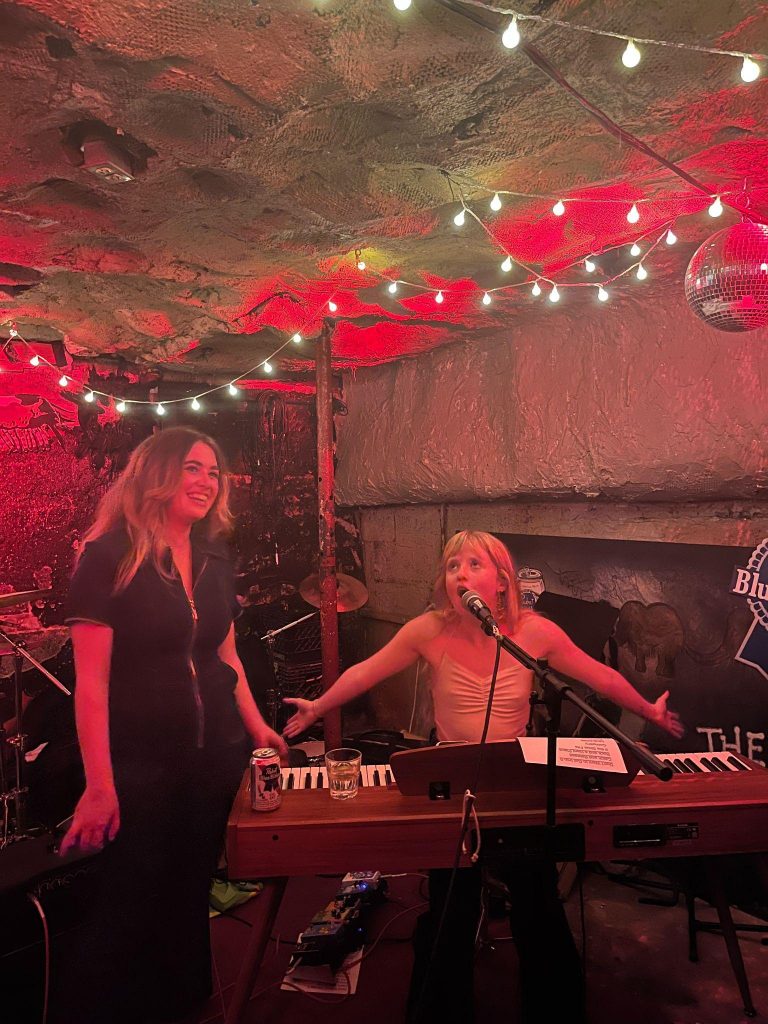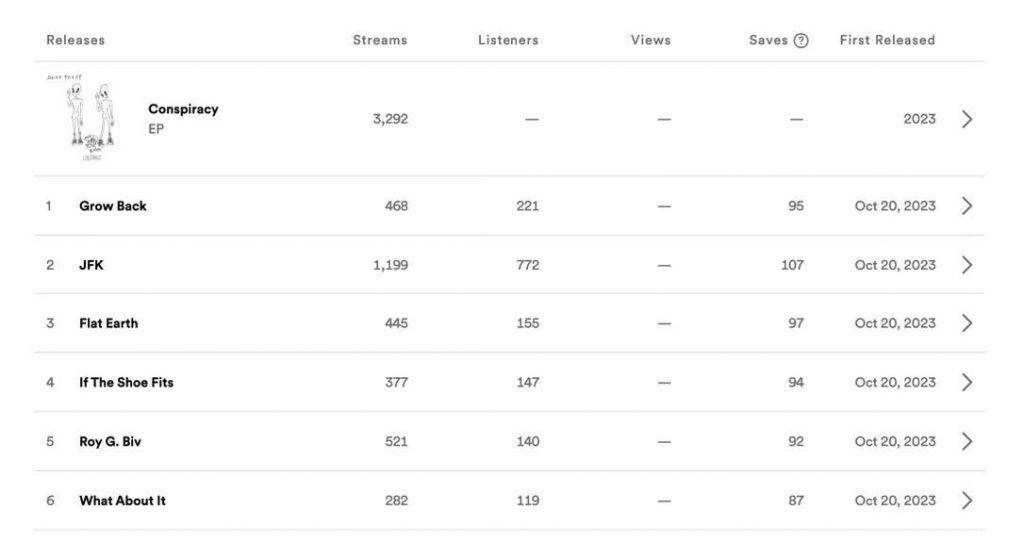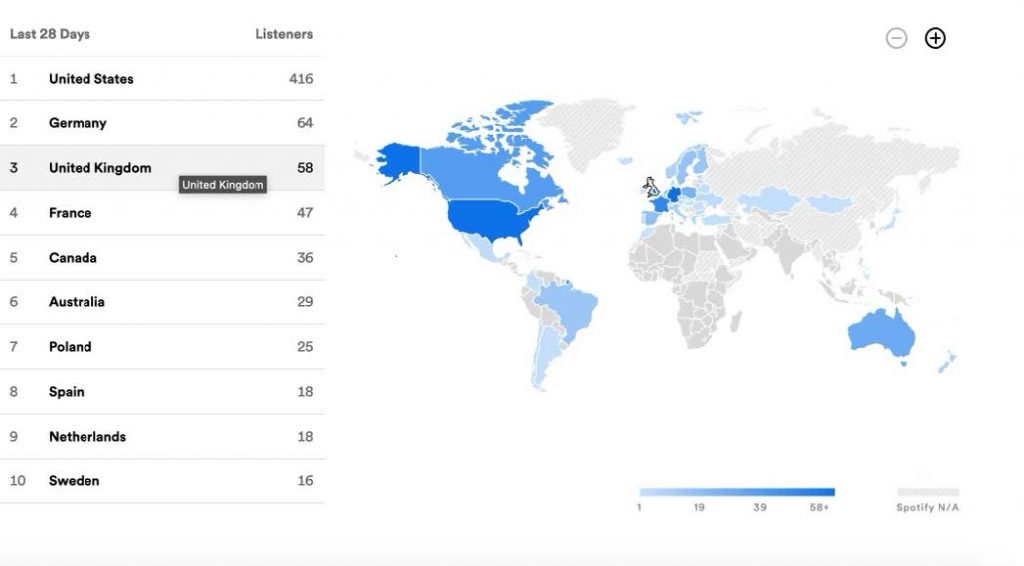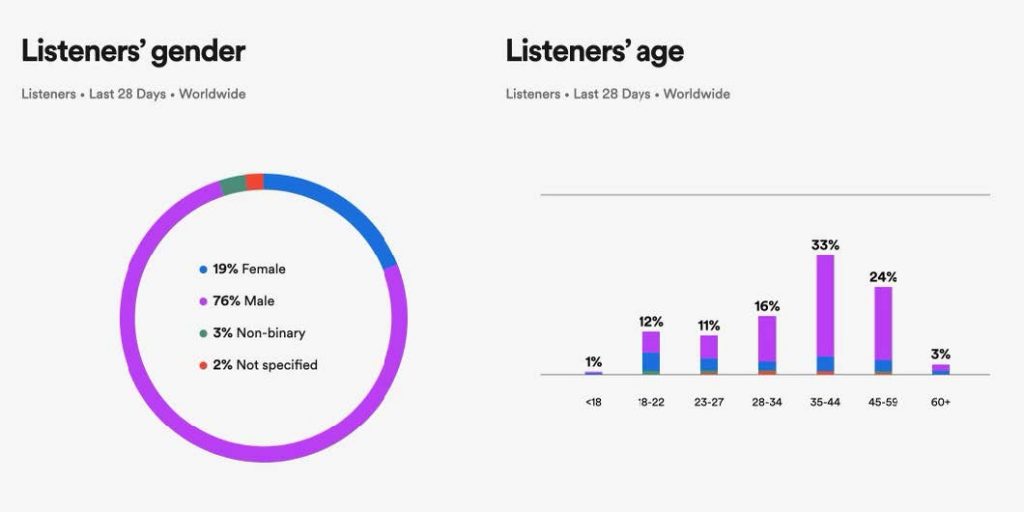An Interview with My Roommate
When I’m not working within the walls of the Institute for Advanced Analytics, I am often playing music with my roommate, Delia Vaisey. I play keyboard and sing backup vocals in her band. She is an incredible songwriter, and playing her songs is a welcome break from the craziness of the program.
Recently, she released an EP, “Conspiracy,” with her band from college, SHOPTALK!.
I was interested in what Spotify’s artist analytics look like and how she takes data into account in her creative process. She showed me what kind of data she sees about her music and answered some of my questions about how analytics influences her as an artist.

The Artist Analytics
Spotify shows artists their streams, listeners, views, saves, and the date of first release for each song:

Next, artists can see a heat map of listeners’ countries for the last 28 days. Spotify also shows how many listeners there are in each country:

Listeners are then broken down by gender and further by age:

Finally, Spotify gives an overview of total listeners and how many are active, previously active, and programmed. Here, “programmed audience” refers to listeners who streamed her songs through playlists or Autoplay, while “active” listeners are those who intentionally streamed her songs:

The Interview
Lizzie: Which measure is most important to you?
Delia: The most important measure to me has got to be the age demographic, oddly. I like the thought that middle-aged men are enjoying my rock breakup songs about twerps in their 20s. I also like to see which songs are doing the best on the EP so I know where to gear my sound.
Lizzie: What is your standard of success when thinking about your artist analytics?
Delia: It is honestly cool to see that any number of people have listened to your music, even if it’s a few hundred. Music is so personal to me, so to think about that many people in a physical room vibing to my songs is crazy.
Lizzie: Does performance affect the kind of music you will create? Will you create more music that sounds like the songs that do best?
Delia: In this case, I think “JFK’s” success shows that collaborations between me and my guitarist Ben might be successful in the future. This is useful and comforting information, as we plan to collaborate moving forward!
Lizzie: What insights have you been most surprised by?
Delia: I am surprised at how male-dominated SHOPTALK’s audience is. I would like to work on fixing that if at all possible!
Lizzie: From a listener’s perspective, we only see streams and monthly listeners. Do these stats tell the whole story?
Delia: Stats can never tell a whole story with something objective like DIY music. However, I think the fact that strangers have listened to our music in any capacity is exciting (not only personally but globally) in an increasingly competitive music scene.
Whether you think about analytics all day, every day (like me), or only when your Spotify Wrapped comes out, data affects our lives every day, down to the music we listen to. I really appreciated this insight into how analytics informs the creative process!
Columnist: Lizzie Mabe
